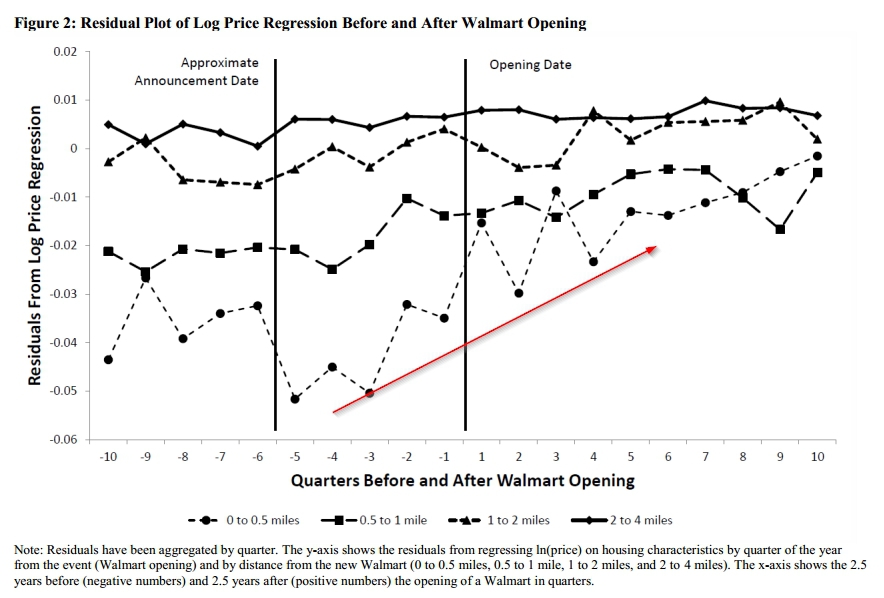When Walmart Comes to Town: Always Low Housing Prices? Always?
- Devin Pope and Jaren Pope
- A version of the paper can be found here.
- Want a summary of academic papers with alpha? Check out our Academic Research Recap Category!
Abstract:
Walmart often faces strong local opposition when trying to build a new store. Opponents often claim that Walmart lowers nearby housing prices. In this study we use over one million housing transactions located near 159 Walmarts that opened between 2000 and 2006 to test if the opening of a Walmart does indeed lower housing prices. Using a difference-in-differences specification, our estimates suggest that a new Walmart store actually increases housing prices by between 2 and 3 percent for houses located within 0.5 miles of the store and by 1 to 2 percent for houses located between 0.5 and 1 mile.
Alpha Highlight:
Walmart is the prime example of how competition and free markets can deliver goods to consumers at prices nobody would have believed possible 20-30 years ago. I personally love Walmart, but Amazon is quickly becoming my retail store of choice (gotta love competition!).
Of course, Walmart has a lot of haters, and probably for good reason in some cases. Common criticisms include the following: They exploit labor, they destroy communities, they strong-arm suppliers, and so forth.
But how does a Wal-Mart affect real estate prices?
As shown below, prices on real estate surrounding a Walmart get a boost.
More home equity loan proceeds to spend on Walmart products!
About the Author: Wesley Gray, PhD
—
Important Disclosures
For informational and educational purposes only and should not be construed as specific investment, accounting, legal, or tax advice. Certain information is deemed to be reliable, but its accuracy and completeness cannot be guaranteed. Third party information may become outdated or otherwise superseded without notice. Neither the Securities and Exchange Commission (SEC) nor any other federal or state agency has approved, determined the accuracy, or confirmed the adequacy of this article.
The views and opinions expressed herein are those of the author and do not necessarily reflect the views of Alpha Architect, its affiliates or its employees. Our full disclosures are available here. Definitions of common statistics used in our analysis are available here (towards the bottom).
Join thousands of other readers and subscribe to our blog.


